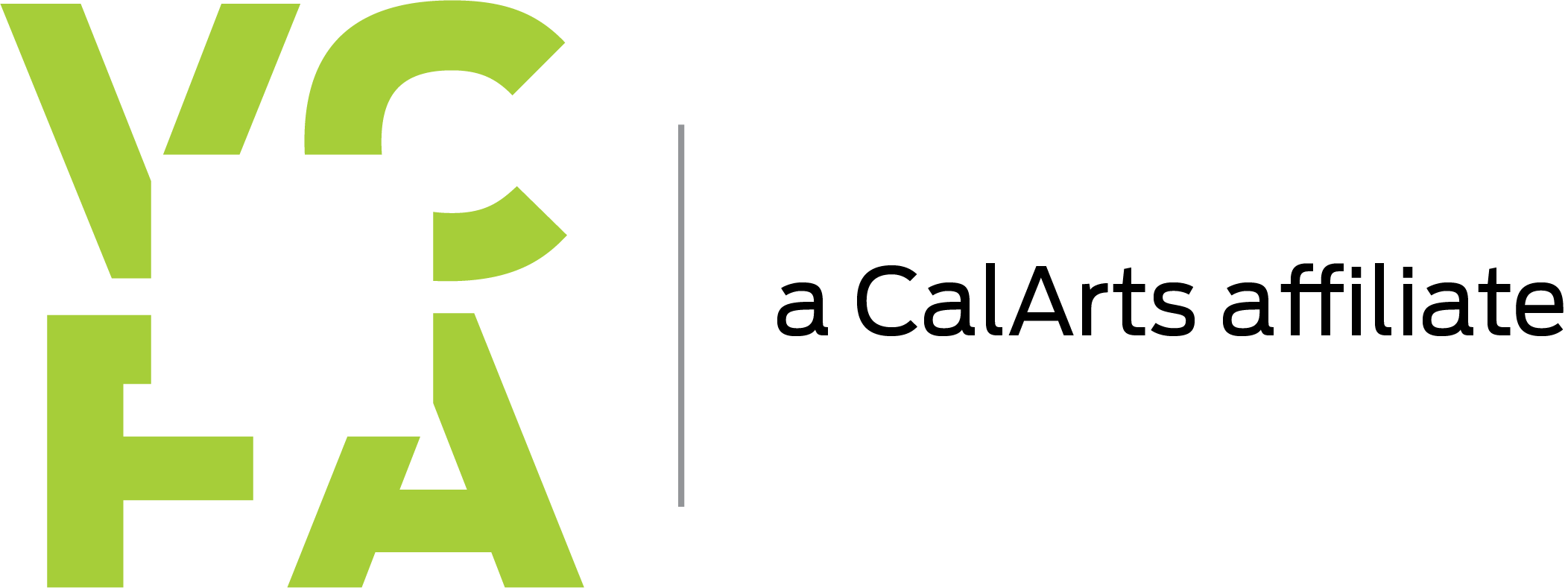Graphic Design Inquiry-Based Pedagogy and Program Curriculum
INQUIRY-BASED PEDAGOGY
Each student’s curriculum is personalized and specific to their design research interests, skills and areas of growth. Faculty support students in examining their design practice, developing new areas of inquiry, and pursue the areas that excite and intrigue them. Students are encouraged to bring their identities, experiences, backgrounds and interests into the design process and into their design practice. Each student shares their work and that work is a reflection of their self.
At VCFA, our students do not attend traditional courses. Instead, our educational model views our students as active agents in their own learning, and empowers them to engage constructively and critically with their education, identifying the topics they want to explore, reflecting on their own capacities and skills, and taking ownership of the creative process. Our students learn through doing, and their knowledge expands through both the experience of designing and through dialogue with their faculty advisor and their peers about that experience.
We respect that students enter our program with a variety of work and life experiences. Students are invited to participate by bringing their pre-existing knowledge, both formal and informal, into the educational discourse and by guiding their learning independently. Our faculty, in turn, act as facilitators rather than as lecturers; in communication with each student, they encourage deeper exploration by posing questions and encouraging growth; they provide feedback and invite students to explore areas they might not otherwise consider.
Our model is rigorous, creative, and in many ways challenging – but it results in intellectual self-discovery that is rewarding and positions designers for a lifetime of generative creativity.
In building our educational model, we heavily referenced the works of the following scholars, authors, and theorists: bell hooks, Paulo Freire, Brené Brown, John Dewey, Jane Jacobs, Jane Addams of Hull House, Charles Pierce, William Morris, W.E.B. Du Bois, James Baldwin, Gilles Deleuze and Félix Guattari, among others.
Methods of Exchange
- Semester Study Plans – at residency and at the beginning of every semester, students work closely with faculty to determine areas of interest and set goals for their learning over the next six months. This culminates in the study plan, which is akin to a syllabus each student develops for themselves, with faculty guidance and support.
- Packets – The student uses their study plan to develop monthly submissions that they send to their faculty advisor. These packets include creative work, critical readings, visual research, reflective writing about their progress, and a running bibliography for their scholarly reading and research. The packets reflect work the equivalent of 25 hours weekly over the course of the month.
- Monthly Meetings – Each faculty member reviews the student’s packets and provides detailed written feedback and critique for the student to consider. Then, the faculty member meets with the student one-on-one to discuss the feedback and develop ideas, goals and next steps for the following month. Often, this involves revising the study plan as the student’s research areas and design work evolve over the course of the semester.
- Evaluations – Faculty and students engage in mutual and self-evaluation at two points in the semester: during midterms and finals. The evaluations provide a written record of what each has accomplished, as well as providing a place for reflection and honest assessment of progress toward goals. The evaluation ensures that the faculty and student working relationship is both supportive and productive.
- Residency – At the completion of each semester, students prepare to display all their semester work in process exhibitions we call “Pin Ups”. The work is shared with peers, as well as with the other advisors whom the student did not work with. Through a series of conversations and critiques, students receive feedback and develop new avenues of exploration for the following semester.
- Thesis – Each student in the MFA program completes a culminating thesis project in their final semester. The thesis takes the form of a published book that includes both a written component and a body of creative work. Additionally, students design a thesis website and curate a thesis exhibition at their final residency. Students present their work to the community and receive an in-depth thesis critique with feedback on how to continue their design explorations after graduation.
PROGRAM CURRICULUM
Two-Year Program
The two-year MFA program in Graphic Design at VCFA is ideal for students with professional backgrounds and/or baccalaureate degrees in a graphic design field. The two-year program is designed to allow for sustained study and critical thinking associated with graduate-level education. Students develop specific communication strategies through graphic design, as well as critical thinking skills and content generation.
Year One & Two: Students will engage in graduate-level MFA work in Graphic Design
- Trying new research methods
- Developing critical expertise
- Developing a personal body of design work
- 4 Semesters / 5 Residencies total
Three Year Program
The three-year MFA program in Graphic Design at VCFA is designed for students with backgrounds in liberal arts, fine arts, and sciences. In the three-year program, the first year is designed to bolster students’ strengths and critical abilities in typography, image making, design history, theory, and authorship. Upon completion of the initial year of study, students complete two more years of study at the level of their peers in the two-year program.
Year One: Students will focus on developing the foundations in Graphic Design
- Typography, Image Making, Design History, Design Theory and Authorship
- Two Semesters / Two Residencies Total
Year Two & Three: Students will engage in graduate-level MFA work in Graphic Design
- Trying new research methods
- Developing critical expertise
- Developing a personal body of design work
- Four Semesters / Five Residencies total
Postgraduate Semester in Graphic Design
Designers with an MFA are invited to apply to the Postgraduate Semester with Graphic Design in order to take their current practice in a new direction.
- Participants in this individualized program will develop a substantial research project and/or body of design work.
- The 12-credit semester begins with a content-packed initial in-person residency
- The semester culminates in a public presentation and critical discussion of the work at a second in-person residency
Featured Artwork by Dru Poole (GD ’25)

